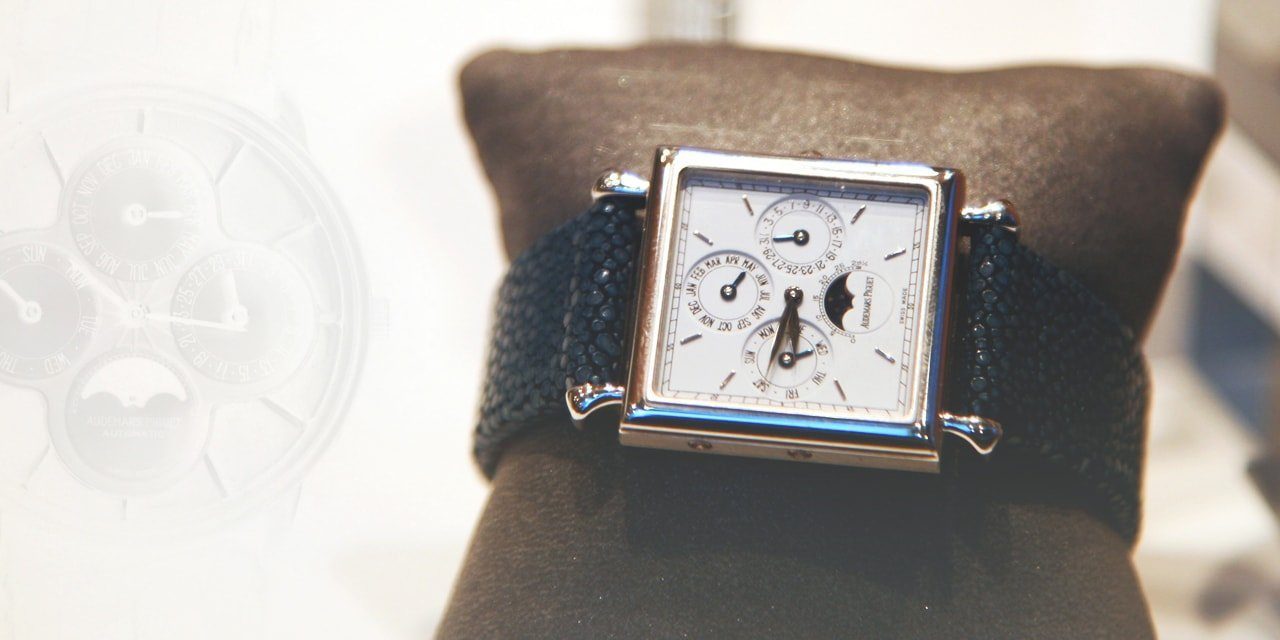The Beckertime Brand Series: Audemars Piguet
Making up one third of the so-called Holy Trinity of horology, Audemars Piguet sits alongside the other watchmaking titans of Patek Philippe and Vacheron Constantin.
Formed in the late 18th century, the marque was founded by two friends, each bringing his own particular strengths and attributes to tackle the myriad challenges of producing timepieces which would go on to revolutionize the industry.
Today, the brand is still in family ownership, one of the very few of the truly major players who can make the claim, and their output continues to be as innovative and relevant as ever.
Below, we explore the history and legacy of Audemars Piguet and take a look at some of their contemporary work.
Audemars Piguet History
The Vallée de Joux, high up in Switzerland’s Jura Mountains, has been host to many of the country’s most renowned watch manufacturers. And it was here in 1874 that two men in their twenties, Jules Louis Audemars and Edward Auguste Piguet, rekindled a friendship which had started in early childhood.
Both men were already watchmakers, and each had descended from several generations of horologists before them. Audemars’s strengths lay in the highly technical, having spent his career thus far producing complicated movements for the likes of Tiffany & Co.
Piguet, by comparison, had been a ‘repasseur’, a master watchmaker responsible for executing the final regulation on watches.
It was a logical step for the two to go into business together, partnering up in 1875, with Audemars in charge of production, development and manufacturing, and Piguet heading up movement assembly and quality control. He would later go on to transfer his talents to the business side of the organization, taking over the sales and marketing role. The partnership was made official in 1881 with the founding of Audemars Piguet & Cie, setting up shop in the village of Le Brassus in the Vallée de Joux.
The Early Years
It would take until 1892 before the new company registered a real innovation, manufacturing the movement for the world’s first minute repeater wristwatch, made by Louis Brandt.
Boosted by that achievement, in 1899 the pair brought forth their first Grande Complication pocket watch, the Universelle. Featuring a grand and small strike, a minute repeater, a perpetual calendar, deadbeat seconds, an alarm, a chronograph with jumping seconds and a split seconds hand, it was then, and still ranks now, as one of the most complicated timepieces ever made.
Sadly however, while the Universelle put Audemars Piguet on the map, both of the company’s founders passed away within a year of each other, in 1918 and 1919.
The business was passed down to the two men’s respective sons, Paul Louis Audemars and Paul Edward Piguet. They were able to draw on the years of watchmaking heritage inherent in both families and carry on AP’s pioneering work. In 1921 they debuted the first jumping hour wristwatch, following up in 1934 with the first ever skeletonized model and, in 1946, produced the world’s thinnest watch, containing a movement just 1.64mm thick.
The Introduction Of An Icon
In 1972, during the darkest days of the quartz crisis, Audemars Piguet introduced not just a new watch, but an entirely new genre of watches.
As traditional houses with hundreds of years of history were going into receivership all around them, the fight back for AP was something of an all-or-nothing shot in the dark.
The key, the brand had decided, was boldness. Something to drag the public’s attention back from the world of electronics and concentrate it once again on the artistry of the mechanical.
As a result, then-managing director, Georges Golay met with legendary creator, Gerald Genta just one daybefore the opening of the 1971 Baselworld event (then called the Swiss Watch Show).
When Genta was presented with Golay’s plans for the entirely unheard of category of ‘luxury sports watch’, and charged with coming up with designs to present the following morning, his unrivalled genius penned the Royal Oak overnight.
A massive disruption to the status quo, the steel watch with its integrated bracelet and distinctive porthole-style bezel, complete with exposed screws, launched in full the following year. And, while it may not have been an immediate success, the model Genta called the ‘masterpiece of my career’ would go on to become one of the most renowned and well respected watches of all time.
Modern Audemars Piguet
The Royal Oak has since become an emblem of the brand and its flagship collection.
The series was expanded upon in 1992 to mark the 20th anniversary of its debut when designer Emmanuel Gueit gave us the Royal Oak Offshore. A larger version of the original, the 42mm case made it the first oversized luxury watch, creating a trend jumped on by just about every manufacturer for the next two decades.
Elsewhere, Audemars Piguet have continued to innovate and in 2000 created the incredible ref. 25934PT to celebrate 125-years in business.
The limited edition platinum model features a perpetual calendar with equation of time, moon phases and leap year indication.
Today, far from being simply all about the Royal Oak and its various offshoots, AP fans flock to the brand for the stunning Jules Audemars collection of dress pieces, the offbeat Millenary range, the classic but unorthodox Code 11.59 series and the vintage-inspired [RE] Master01 chronograph.
In addition, the maison has continued to experiment with state-of-the-art materials and complications. They were the first to issue a fully carbon fiber cased watch in 2007 and have introduced ceramic and frosted gold variants of their Royal Oak Offshore and Concept collections.
Their current portfolio houses something for everyone, whether your tastes run to the subtle or the extreme, and Audemars Piguet remain one of the true giants of the horology industry.
— Featured Photo Credits: Rama, CC BY-SA 2.0 FR & jcw, CC0, via Wikimedia Commons via Wikimedia Commons.






